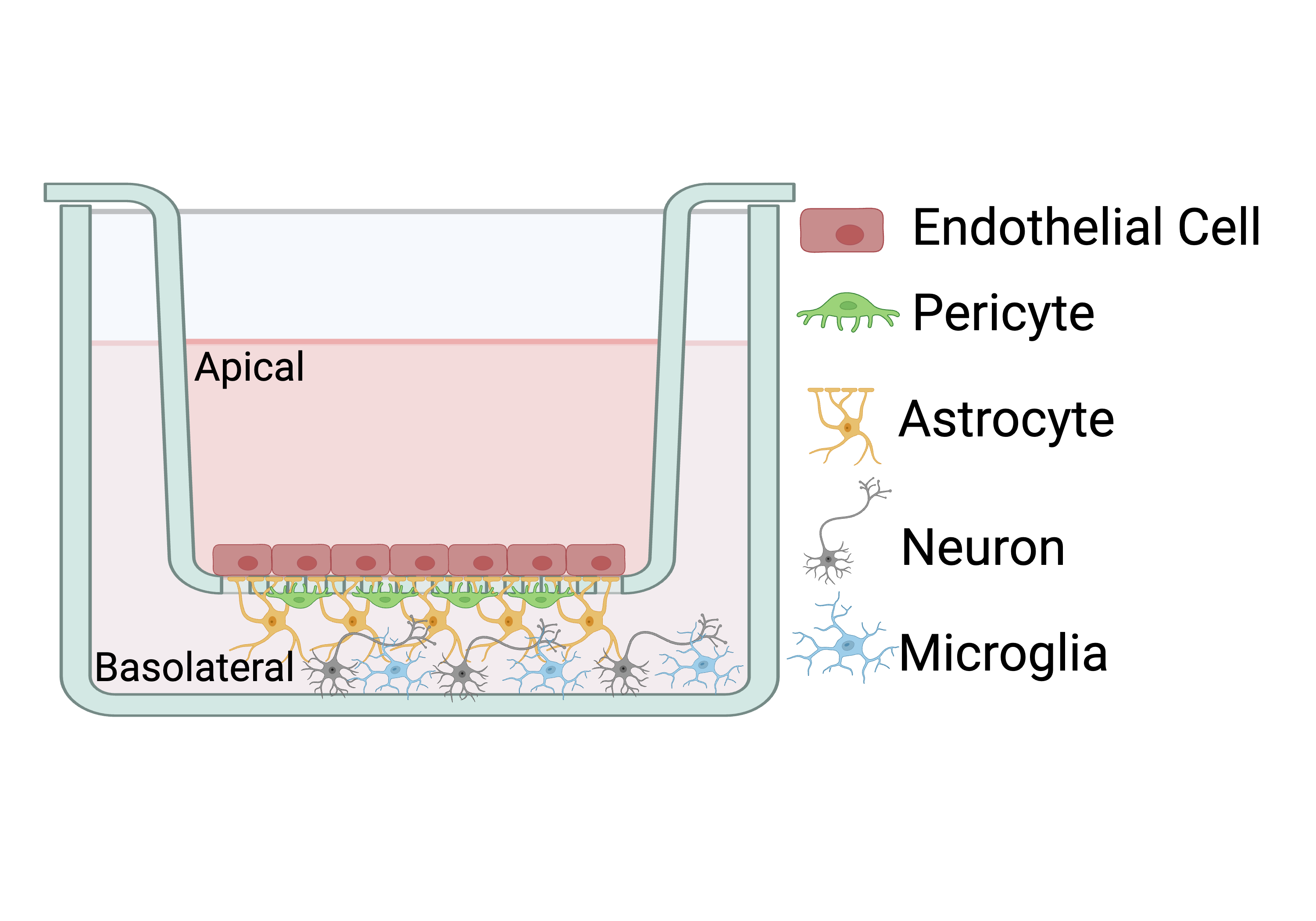Project 1
One of the major challenges in HIV eradication is the existence of anatomic reservoirs – organs in which sustained viral replication occurs despite successful treatment with ART. The brain represents one of the most challenging HIV reservoirs, as it is infected as early as eight days after primary infection and is separated from the rest of the body by the blood-brain barrier (BBB), which prevents ART from freely entering the brain. As a result, HIV in the brain is not suppressed to the same extent as to what occurs in peripheral organs. Further, substance abuse, a comorbid condition intertwined with the HIV pandemic, has profound consequences for neurologic function during HIV infection that alters the incidence, severity, and/or progression of neurologic impairment. Our lab studies the drug transporters and metabolizing enzymes present at the BBB, focusing on brain microvascular endothelial cells, astrocytes, and pericytes, to identify the mechanisms by which ART enters the brain to aid in successfully therapeutically targeting this challenging organ. In doing so, we seek to examine the mechanisms by which drugs of abuse impact these processes and alter ART’s efficacy in the brain.
 Grants:
Grants:

- K99/R00 DA044838 from NIDA entitled “Cocaine Use and HIV Antiretroviral Therapy Efficacy in the CNS”
- Colón Ortiz R, Knerler S, Fridman LB, Mercado A, Price AS, Rosado-Franco JJ, Wilkins H, Flores BR, Orsburn BC, Williams DW. Cocaine regulates antiretroviral therapy CNS access through pregnane-x receptor-mediated drug transporter and metabolizing enzyme modulation at the blood brain barrier. Fluids Barriers CNS. 2024 Jan 10;21(1):5. doi: 10.1186/s12987-023-00507-3. PubMed PMID: 38200564; PubMed Central PMCID: PMC10777548
- Wilkins HN, Knerler SA, Warshanna A, Colón Ortiz R, Haas K, Orsburn BC, Williams DW. All Blood Brain Barrier Cell Types Demonstrate Capability to Influence Differential Tenofovir and Emtricitabine Metabolism and Transport in the Brain. ACS Pharmacology & Translational Science 2024 7 (11), 3626-3640; DOI: 10.1021/acsptsci.4c00510